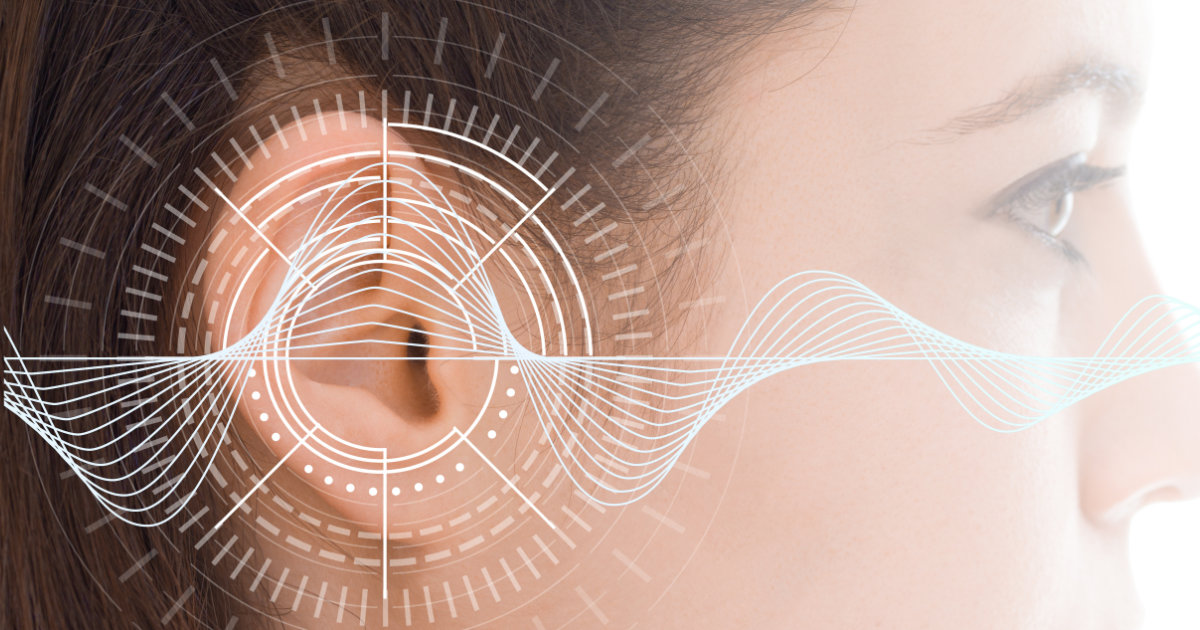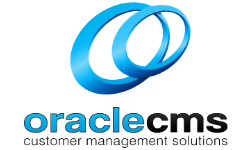Active Listening Skills for Customer Service and Call Centres
I often get asked what the most important attribute is in being able to provide great customer service via the call centre.
Of course, strategically, removing the need for the customer to even make contact with the call centre is always a great start.
And the techies amongst us will tell us that chatbots, artificial intelligence and a whole host of other exciting technology is the answer.
But if we put aside all of that for now and make a wild assumption that at some stage in the process a customer will actually talk to a call centre employee, there is one clear standout skill that every call centre agent should possess so in this article, I’m going to focus on the benefits of active listening.
Jump straight to a section:
The Origins of Active Listening
The term Active Listening was first coined in 1957 in a paper titled Communicating in Business Today.
The Author’s found that “people who have been listened to in this new and special way become more emotionally mature, more open to their experiences, less defensive, more democratic, and less authoritarian”.
Even biology gives us subtle reminders we should listen more and talk less.
A term my mother always used to say was “There’s a reason we were given one mouth and two ears!”.
More recent research also reinforces we need to pay more attention when listening suggesting that humans only remember between 17 per cent and 25 per cent of the things they listen to.
So it’s pretty clear we all need to lift our game in demonstrating that we are actively listening to improve the level of customer service we provide.
What is Active Listening?
Before we dive into why it’s so important and some tips on how to improve your active listening skills, let’s be clear on a definition.
Active Listening in customer service is defined as a technique that requires the listener to concentrate, demonstrate, respond and remember what is being said by the customer.
Broadly speaking, Active Listening can be divided into two key components:
1. Non-Verbal Active Listening
When we used to communicate back in the old days before technology and even letters, humans relied on actually speaking to each other in a face to face environment to communicate.
I know right.
Weird.
And we actually became pretty good at it.
Studies have shown that when communicating in person, a large percentage (the actual amount varies between studies) of the interaction is assessed from the visual queues as opposed to what was said (the verbal component).
In fact when I think back to my childhood, from the moment I walked into the lounge room I knew I was in trouble just by the look on my mums face before she had even said a word!
That’s an example of non-verbal active listening.
A smile or frown, eye contact, posture, hand movements and gestures etc all enable me to gauge pretty quickly the situation I’m in and whether the person I am talking to is engaged and paying attention.
2. Verbal Active Listening
For active listening in call centres, however, we don’t have the luxury of being able to physically see visual cues from the customer (well not yet until video chat becomes more commonplace but that’s for another article).
And that’s where the active listening process becomes so critical.
Why Active Listening skills for call centre agents are so critical
With the power of sight taken away from us, it becomes essential that we use our verbal skills to become a master of the customer service profession.
Even in a visual setting, research has found that words only convey about 7% of what you’re trying to say.
The tone of your voice and your facial expressions account for the other 93%.
So given facial expressions don’t help us in a call centre, clearly we need more emphasis on tone along with these other tips below.
But it’s not just tone along, verbal skills can constitute a lot of different components.
Your pitch, tone, pace etc. and all play an important part in the customer experience.
6 Active Listening Tips for Call Centre Agents
As I mentioned above, working in a contact centre with the power of sight taken away, we rely solely on listening to a customer’s voice as our only means of being able to demonstrate active listening.
These 6 tips below will help demonstrate to the customer that you’re paying attention.
1. Verbally demonstrate that your listening
In a physical sense that would involve nodding your head, smiling, using facial expressions etc as we’ve mentioned.
In a call centre environment where you can’t be seen, you need to employ a different technique.
Using verbal cues like yes, aha, mmm, yep understood to help convey to the customer you are listening.
2. Provide Feedback
One of the most powerful techniques you can use for Active Listening is Paraphrasing.
Paraphrasing is the process of restating what the speaker has said, but using different words and, if necessary, in a slightly different context.
This is a sure-fire way of providing the customer with the confidence you have been paying attention and understand the situation.
Also don’t be afraid to ask questions.
Taking an active interest in what the customer is saying by asking questions reinforces that you are invested in understanding their point of view.
3. Pay Attention
It’s easy to get distracted working in a call centre.
From the numerous apps on your desktop, your colleagues or just watching the world go by outside (if you have windows) its not hard to sometimes tune out a little.
As a contact centre agent though you need to remain focused on each and every customer.
Using dual headsets where both ears are covered can reduce noise distractions.
4. Acknowledge Emotions
If you can hear that a customer is upset, adjust your approach to help the customer.
When the customer sounds frustrated or angry, use empathy (see below) and reassure them you are here to help.
If they’re happy, match them with their tone and get the positive vibes flowing.
Using Empathy Statements can also be a powerful weapon.
5. Don’t jump to conclusions
When you take similar types of calls all day it can be easy to jump to conclusions as soon as a customer opens their mouth.
But it’s important you keep an open mind and make sure you don’t miss out on critical information.
6. Use Empathy
By using genuine empathy you are demonstrating to the customer that you understand, and care for their situation.
This reinforces that you have been listening intently to their concerns.
As I mentioned earlier, using Empathy Statements is an effective way to convey empathy and get the customer back on side.
An example of NOT using Active listening in a call centre
I’ve listened to a lot of calls over the decades and the calls that are the most painful to listen to are normally the ones where at one point, the customer has actually said “are you still there? are you listening to me?”.
Or perhaps this scenario might sound familiar:
Customer: “Oh hi Justin, my name is Emily and I’m just wanting to enquire about my latest bill”
Justin: “Thanks for calling. Yes, I can help you with your bill enquiry. Can I just start with your first name?”
Sigh ?
Both are clear examples of when active listening skills have not been applied and the end result is typically a pretty disappointed and frustrated customer.
5 Active Listening Tips for any Customer Service role
What are 5 active listening techniques for customer service? You’ll find lots of material on the internet but I believe that there are five key active listening tools or techniques that can be used in any customer service role so read below for my top 5 tips for active listening.
1. Use Positive Reinforcement Words
It’s important to drop in some positive words to the conversation like “yes”, “very good”, “absolutely” etc to let the customer know that you are listening and comprehending in a positive manner what they are saying.
2. Use Affirmation Sounds
When the customer is talking, make sure you insert some affirmation sounds like “aha”, “mmm” etc at the right time to let them know you are still listening intently to what they are saying.
This will go a long way to avoiding the “are you still there?” comments.
3. Engage your brain
Remember that example I provided earlier about the customer offering their name at the start and then the agent asking for it again?
If you didn’t then you need to also work on your reading skills…
There is nothing worse than a customer providing information to the call centre agent that only moments later, the call centre agent asks for the same information again.
So either make sure you remember or write it down!
4. Use Questions
When a customer is providing you with information, asking them relevant questions is a sure-fire way to demonstrate that you were listening to what they were saying.
It also shows that you care, and in case you didn’t know, displaying empathy is also a great technique to use in winning a customer over.
And if you need some empathy statements you can use, it just so happens I’ve got some for you: 15 Empathy Statements you can use in customer service and call centres.
5. Clarify/Summarise
It’s always a great idea to seek clarification from the customer on the information they have provided you.
This might be immediately after they’ve provided the information (paraphrasing) or a nice summary at the end.
It categorically demonstrates that you were actively listening!
Summary
I’m a firm believer that customer service is a learnt skill that is made up of many different components and there is no one silver bullet.
But having judged numerous call centre awards one thing I can assure you is, Active Listening skills are the one common attribute that is always shared by all the best agents!
Other things you should consider to help with agent success are:
- Regular coaching and feedback.
- Use a Phonetic Alphabet.
- Easily accessible and accurate product and service information via a Knowledge Management System.
- Clear Key Performance Indicators that drive the right behaviours.
- Reward and Recognition programs, gamification tools etc.
If you enjoyed the article please press the heart button below!
Links to more great tips
Upcoming ACXPA Member Bites Sessions
Short, sharp interviews and presentations on specific topics to fast-track your knowledge!
The ACXPA Member Bites are only available to ACXPA Members!
ACXPA Members can watch all the ACXPA Member Bites at any time in their Video Library. Discover which membership is right for you >

IVR Best Practice
Over 90% of contact centres are using an IVR (Press 1 for this, press 2 for that), and we've encountered many contact centres with over four layers of options for customers to select from. In this session, Nadine will be sharing some best practice tips on IVR design for 2024.
Presented by Nadine Power, Client Success Manager, VERSA Connects (and ACXPA National Advisory Board Member)
More sessions announced soon!
(If you're interested in speaking at one of our events, click here to learn more >)
- About the Author
- Latest Articles
After spending over 30 years working in contact centres and CX, one thing I’ve learnt is there is always something more to learn!
I’m thrilled to be the inaugural CEO of ACXPA, and together with the rest of the team, we’re focused on helping Australian businesses deliver efficient and effective customer experiences via phone, digital and in-person by empowering their employees with the skills, industry insights and professional support networks they need to succeed.



















